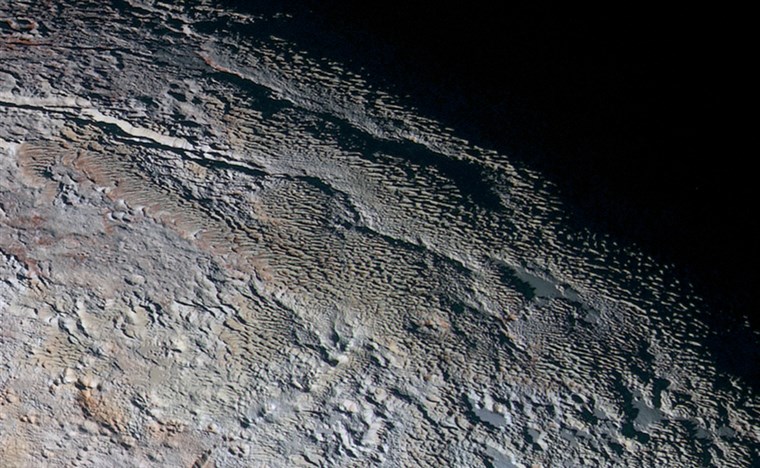
Scientists believe that exploring the equatorial regions of Europa (Jupiter’s ocean moon) would definitely not be a walk in the park. The tropics of Europa, which is thought of as a moon that could potentially support life are probably filled with ice blades which could be up to 15 meters (50 ft) tall, according to new research.
Europa hides beneath its icy shell a huge ocean filled with salty liquid water and this has been the basis of scientists’ theory of life-support. NASA is really interested in this new finding because the space agency is under way of developing a lander mission which will have the purpose of hunting for signs of life on Jupiter’s satellite which is 3,100 kilometers (1,900 miles) wide.
Dab Hobley is the study’s lead scientist and he is a lecturer for the School of Earth and Ocean Sciences at the Cardiff University in Wales. In an interview with Space.com via email, he said that “clearly, the paper suggests very strongly that the tropics of Europa are going to be spiky, and it would be unwise to plan to land there without a specially adapted lander. It would probably be safer to land further away from the equator!”
Rows of such jagged ice towers can be seen here on Earth too, when exceptionally dry and cold conditions are met, as it is the case in the Chilean Andes. They are called penitents from the Spanish word ‘penitent’ and the reason for that is that they often resemble people kneeling in penance.
Penitente formation is driven by sublimation, which is happening when a material transitions directly from solid to gas form. What is initially a smooth pack of snow can sublimate at different rates in different places which leads to some pits to form. When sunlight bounces around those pits, sublimation is boosted in depth and that’s how spiky ice towers are formed.
Juana loves to cover the tech and gaming industry, she always stays on the first row of CES conference and reports live from there.






